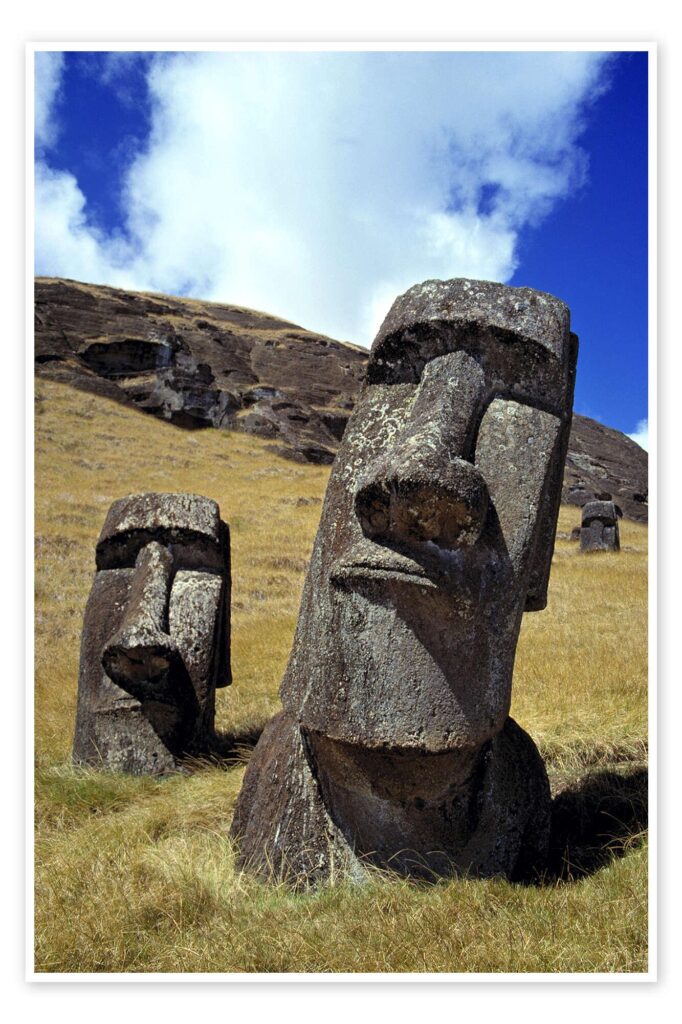Scientists have long been captivated by the enigmatic moai statues of Easter Island, towering monoliths that have stood silent for centuries. Now, groundbreaking research has unveiled a remarkable truth: these iconic figures were not simply dragged into place-they actually “walked.” This discovery, confirmed by recent experiments and detailed in a new study, solves a 500-year-old mystery surrounding the methods used by the island’s ancient inhabitants to transport the massive stone statues across difficult terrain. The findings offer fresh insights into the ingenuity of Polynesian culture and reshape our understanding of one of archaeology’s most enduring puzzles.
Scientists Uncover Biomechanical Evidence Behind Moai Movement
For centuries, the mystery of how the colossal moai statues of Easter Island were transported across the rugged terrain has puzzled historians and archaeologists alike. Recent biomechanical research conducted by an international team of scientists reveals compelling evidence that these monolithic figures were not dragged or rolled, as traditionally believed, but actually “walked” upright. By analyzing the statues’ unique shape and center of mass, researchers have demonstrated that the moai could have been rocked forward in a controlled, human-guided motion, effectively mimicking a walking gait.
This groundbreaking study combined 3D modeling, robotic simulation, and field experiments with replica statues to validate the walking hypothesis. The findings not only shed light on the engineering prowess of the Rapa Nui people but also showcase an ingenious use of available resources and anatomical design. Key biomechanical factors identified include:
- Optimized center of gravity facilitating balanced forward rocking
- Base geometry allowing pivot-like movement without tipping
- Force distribution that minimized friction during motion
| Parameter | Role in Movement |
|---|---|
| Height-to-Base Ratio | Ensures stability when rocked forward |
| Weight Distribution | Balances the statue to prevent falls |
| Contact Points | Allow pivot effect mimicking footsteps |
Innovative Modeling Reveals Walking Techniques Used by Ancient Islanders
Recent breakthroughs in biomechanical simulations have brought to light the remarkable walking capabilities of the iconic moai statues on Easter Island. Using advanced 3D modeling techniques and physics-based animations, researchers reconstructed how these massive stone figures could have been transported upright, mimicking a swaying motion akin to bipedal walking. This innovation challenges long-held assumptions that moai were moved solely on sledges or rollers, presenting a new narrative where balance, coordinated tilting, and even top-heavy motion played crucial roles.
Key discoveries from the study include:
- Orbital pivot points at the statues’ base allowed rocking movements, reducing ground friction.
- The distribution of the moai’s weight was integral to maintaining stability during motion.
- Cooperative human effort likely synchronized with the statues’ natural balance to “walk” them forward.
| Factor | Effect on Movement |
|---|---|
| Center of Mass | Enables controlled tipping |
| Stone Shape | Facilitates pivot points |
| Human Coordination | Synchronizes forward momentum |
| Ground Surface | Influences friction and balance |
Implications for Archaeological Research and Preservation of Rapa Nui Heritage
Unlocking the secret behind how the iconic moai statues were transported revolutionizes our approach to Rapa Nui’s archaeological narrative. This breakthrough offers researchers a dynamic perspective on the island’s prehistoric engineering and social organization. Understanding that the statues could “walk” using a controlled rocking motion not only challenges previous assumptions of brute force or sled transportation but also highlights the ingenuity of the islanders in adapting their environment. This revelation compels archaeologists to revisit site layouts, pathways, and statue placements through the lens of mobility, opening new fields of inquiry into cultural rituals and community coordination.
Preserving Rapa Nui’s heritage now demands innovative strategies that acknowledge the statues’ mobility and the fragility of their original contexts. Conservation efforts may shift focus towards protecting the ancient “roads” and paths that facilitated moai movement, emphasizing holistic landscape preservation rather than isolated monument maintenance. Additionally, this knowledge can inspire educational programs and sustainable tourism that celebrate the technical prowess of the island’s ancestors in a more immersive, authentic manner.
- Reevaluation of archaeological site formations and alignments
- Development of preservation methods for moai transportation paths
- Integration of motion-based storytelling in cultural exhibits
- Enhanced community engagement through revived traditional skills
| Aspect | Previous Theory | New Insight |
|---|---|---|
| Transportation Method | Wooden sledges and man-power | Controlled walking with rocking motions |
| Community Involvement | Large labor gangs hauling statues | Coordinated teams balancing statues |
| Environmental Impact | Deforestation concerns due to sled use | Minimal landscape alteration through walking |
In Summary
The groundbreaking study not only sheds light on the ingenious methods used by the Rapa Nui people but also reshapes our understanding of ancient engineering and cultural practices. As researchers continue to unravel the mysteries of the moai, this discovery marks a significant milestone in bridging history with modern science, offering a new perspective on one of the world’s most iconic archaeological wonders.
